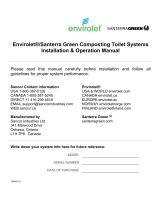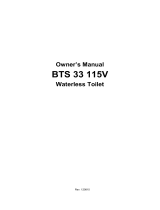Page is loading ...

August 13, 2002
Kitchen
17-3111-14
KITCHEN
KITCHEN
1. When the waste is pushed down into the pump, initial pulveris-
ing and crushing takes place.
2. The waste is compacted in the pump. Fibres are split up under
pressure. Nodules start to break up.
3. The waste is pumped out underground into the middle of the
compost heap.
4. The compacted waste is broken up when it leaves the pump.
Oxygen is added and decomposition accelerates.
5. Microscopic life and worm zones form in and around the waste.
6. The disintegrated compost collects around the sides of the con-
tainer, in the form of soil rich in nutrients.
Take the earth from the top
It avoids watering, adding straw and mixing. And, instead of digging
down into the soil as you would in traditional composting, you
can take the nutrient and humus rich earth from the top of the
heap and spread it on your lawn and/or flower beds.
Odourless and insulating
Using the Stiga Kitchen has many advantages; it produces an
odourless compost. The layer of soil which covers the compost
keeps odours and flies away and insulates the compost from
frost. Insulation also makes the compost work perfectly during
the winter. The layer of earth regulates moisture, it prevents
drying-out when the weather is warm and it encourages the run
off of excess rain. You cannot fail with a Stiga Kitchen.

Kitchen (17-3111-14)
Rozmery a hmotnost
Hmotnost 55,8 kg
Velikost krabice š*v*d 1030X410X470, 1160X220X200, 800X340X130,
750X370X715
Druh balení Carton
Další informace
Instructions for use 8217-3207-04
360 liters
1600x800x735
Warm compost
/





